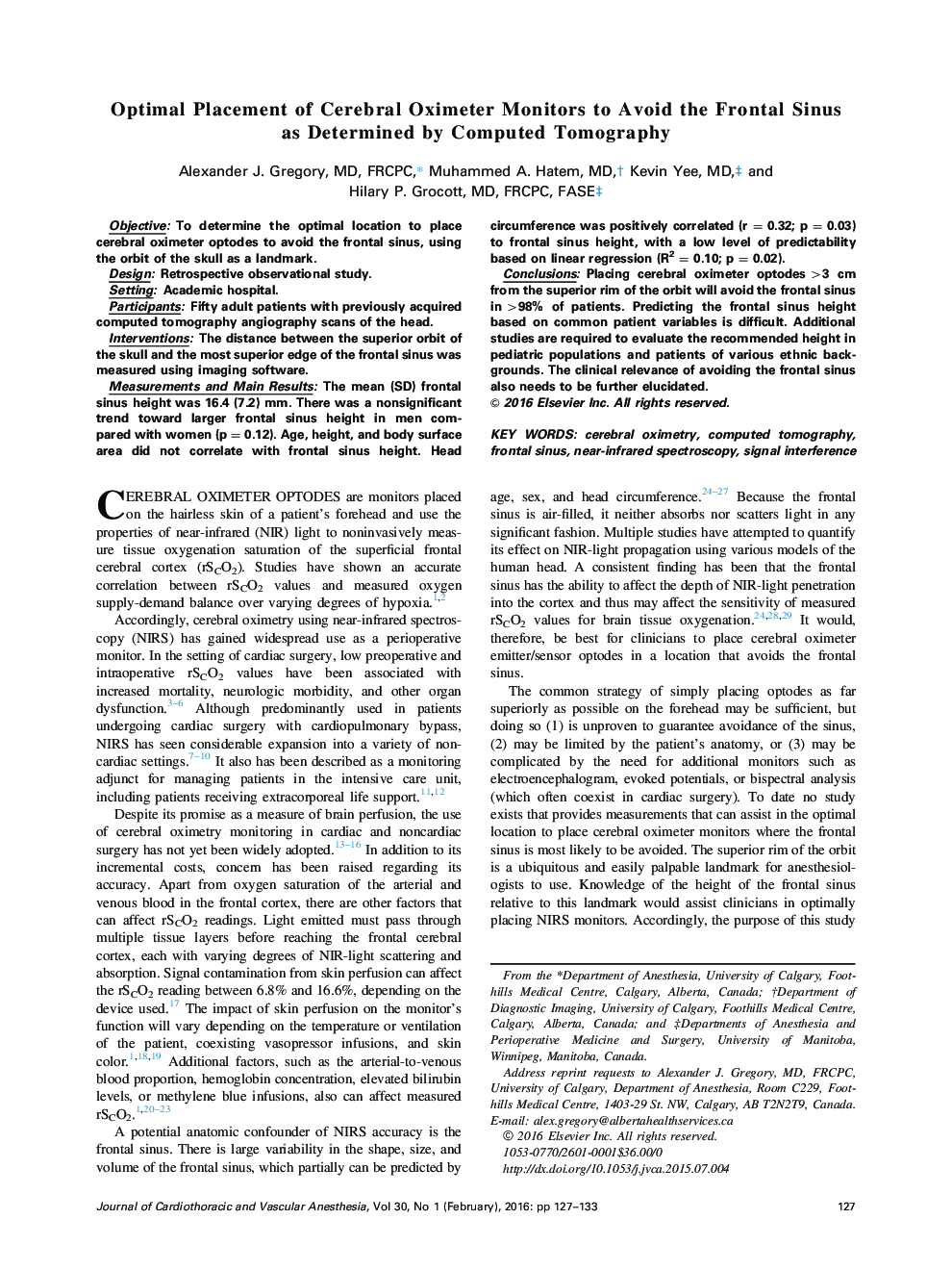| Article ID | Journal | Published Year | Pages | File Type |
|---|---|---|---|---|
| 2759095 | Journal of Cardiothoracic and Vascular Anesthesia | 2016 | 7 Pages |
ObjectiveTo determine the optimal location to place cerebral oximeter optodes to avoid the frontal sinus, using the orbit of the skull as a landmark.DesignRetrospective observational study.SettingAcademic hospital.ParticipantsFifty adult patients with previously acquired computed tomography angiography scans of the head.InterventionsThe distance between the superior orbit of the skull and the most superior edge of the frontal sinus was measured using imaging software.Measurements and Main ResultsThe mean (SD) frontal sinus height was 16.4 (7.2) mm. There was a nonsignificant trend toward larger frontal sinus height in men compared with women (p = 0.12). Age, height, and body surface area did not correlate with frontal sinus height. Head circumference was positively correlated (r = 0.32; p = 0.03) to frontal sinus height, with a low level of predictability based on linear regression (R2 = 0.10; p = 0.02).ConclusionsPlacing cerebral oximeter optodes>3 cm from the superior rim of the orbit will avoid the frontal sinus in>98% of patients. Predicting the frontal sinus height based on common patient variables is difficult. Additional studies are required to evaluate the recommended height in pediatric populations and patients of various ethnic backgrounds. The clinical relevance of avoiding the frontal sinus also needs to be further elucidated.
